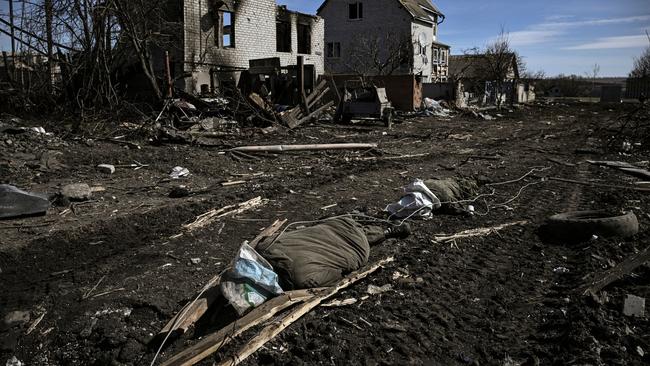How a Russian pincer attack could trap Ukrainian troops
If successful, Russian forces could encircle Ukrainian forces in the east and prevent them retreating west.

The Russian military will attempt to “finish the battle” for Mariupol before attempting a pincer to shatter the best of Ukraine’s forces around the eastern Donbas region, analysts believe.
Such a move, which is of great concern to Western officials, would see troops advance north along the Dnieper River that cuts through the heart of the country.
If successful, Russian forces could encircle Ukrainian forces in the east and prevent them retreating west, potentially turning the tide in the battle for Donbas, the southeast regions of Donetsk and Luhansk.
Cementing full control of the eastern regions, fought over by pro-Russian and Ukrainian forces since 2014, is assumed to be a key motivation for Vladimir Putin.
Moscow announced last week that it would scale back its military ambitions in Ukraine to focus on control of the east in an apparent admission that attacking on multiple fronts was no longer achievable. However, the war may not end there, according to some observers, who believe Putin still has ambitions to storm Kyiv, the capital.
Jack Watling, a research fellow for land warfare at the Royal United Services Institute think tank, said the Russians had realised they have the resources to resupply only one area of fighting. “They can only effectively sustain one axis at a time when it comes to offensive operations. Once they finish with Mariupol they will choose a different axis,” he said.
While doing so, they will continue to fight defensively in other areas so they do not get pushed back from the places they have already captured, such as Kherson, the first major invaded city, in the south, he said.
“If they achieve the Donbas then it is something that they can sell domestically as having succeeded. If they’re not able to achieve subsequent objectives, I don’t see that will be the end to Russian aggression against Kyiv,” he said.
Russian troops are already attempting to encircle Donbas from two directions, moving south past Kharkiv, Ukraine’s second-biggest city, and north from annexed Crimea. Watling said that at the moment the main Russian effort was in the south, where they are attempting to “finish the battle for Mariupol”.
If they complete that operation, they will have a line of supply from Rostov, a port city in southern Russia, directly into southern Ukraine.
They will then face a choice, Watling said. They can either shift the forces to Donbas, or they can push artillery ammunition and supplies to Kharkiv to “complete the encirclement and conduct a similar operation there as they have in Mariupol”. This would allow those forces that have taken Mariupol to have a chance to “reset”.
In the second option, after Kharkiv is taken, the Russians could continue their mission to entrap Ukraine’s Joint Forces Operation in Donbas, which has been deployed since 2014. Such a feat may not be easy.
Ukraine’s troops there are battle-hardened by eight years of fighting and extensive special forces training by Western militaries.
THE TIMES



To join the conversation, please log in. Don't have an account? Register
Join the conversation, you are commenting as Logout